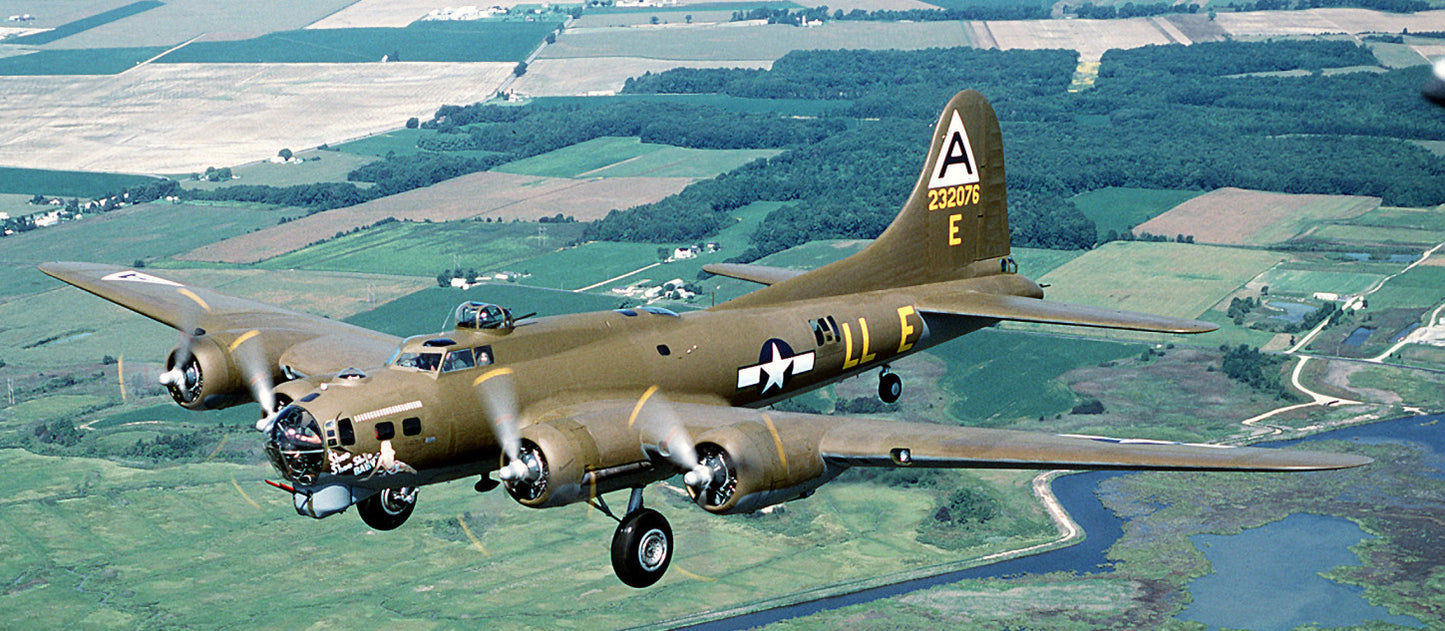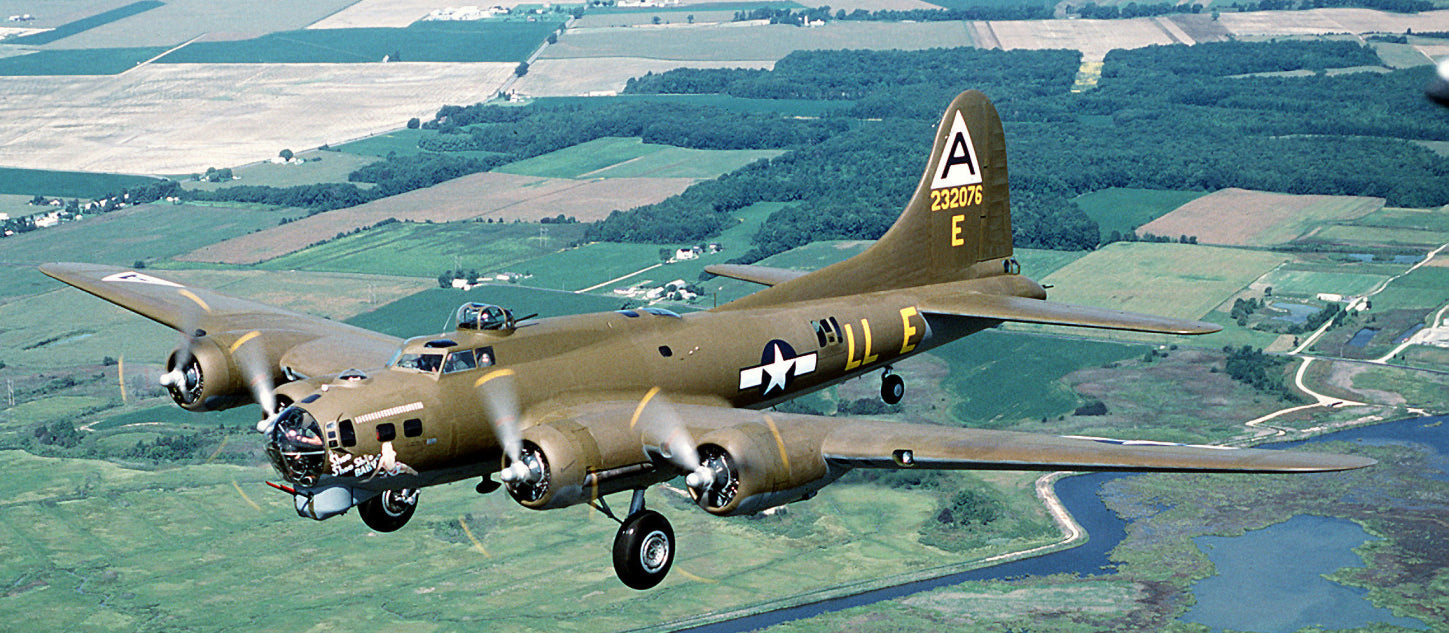World Jerseys
B-17 Flying Fortress Cycling Jersey (S, M, L, XL, 2XL, 3XL)
B-17 Flying Fortress Cycling Jersey (S, M, L, XL, 2XL, 3XL)
Couldn't load pickup availability
Elastic waist and cuffs keep the jersey in place so it wears the way you move. Three large rear pockets keep your stuff out of your way so you can keep just dig in and enjoy the ride. By the way, the cut is designed for cycling; no sense going to all this trouble and then having it fit like some crummy t-shirt!
- 100% DrySport Polyester Wicking Fabric
- 15″ Hidden Zipper
- High-tech Heat Sublimation Printing
- Elastic Waist and Cuffs
- Men's Road Cycling Fit
- Three Back Pockets
The Boeing B-17 Flying Fortress is a four-engine heavy bomber developed in the 1930s for the United States Army Air Corps (USAAC). Competing against Douglasand Martin for a contract to build 200 bombers, the Boeing entry (prototype Model 299/XB-17) outperformed both competitors and exceeded the air corps' performance specifications. Although Boeing lost the contract (to the Douglas B-18 Bolo) because the prototype crashed, the air corps ordered 13 more B-17s for further evaluation. From its introduction in 1938, the B-17 Flying Fortress evolved through numerous design advances,[5][6] becoming the third-most produced bomberof all time, behind the B-24 and the multirole Ju 88.
The B-17 was primarily employed by the United States Army Air Forces (USAAF) in the daylight strategic bombing campaign of World War II against German industrial and military targets. The United States Eighth Air Force, based at many airfields in central and southern England, and the Fifteenth Air Force, based in Italy, complemented the RAF Bomber Command's nighttime area bombing in the Combined Bomber Offensive to help secure air superiority over the cities, factories and battlefields of Western Europe in preparation for the invasion of France in 1944. The B-17 also participated to a lesser extent in the War in the Pacific, early in World War II, where it conducted raids against Japanese shipping and airfields.
From its prewar inception, the USAAC (by June 1941, the USAAF) promoted the aircraft as a strategic weapon; it was a relatively fast, high-flying, long-range bomber with heavy defensive armament at the expense of bombload. It developed a reputation for toughness based upon stories and photos of badly damaged B-17s safely returning to base. The B-17 developed a reputation as an effective bomber, dropping more bombs than any other U.S. aircraft in World War II. Of the 1.5 million tonnes of bombs dropped on Nazi Germany and its occupied territories by U.S. aircraft, 640,000 tonnes were dropped from B-17s. In addition to its role as a bomber, the B-17 was also employed as a transport, antisubmarine aircraft, drone controller, and search-and-rescue aircraft.
As of May 2015, ten aircraft remain airworthy. None of those ten were ever flown in combat. Dozens more are in storage or on static display. The oldest of these is a D-series flown in combat in the Pacific and the Caribbean.
Share






